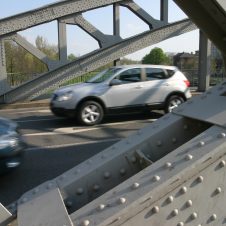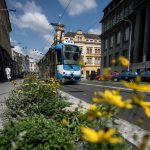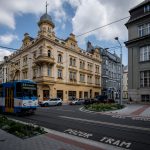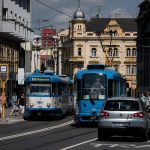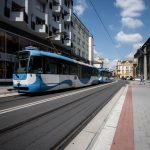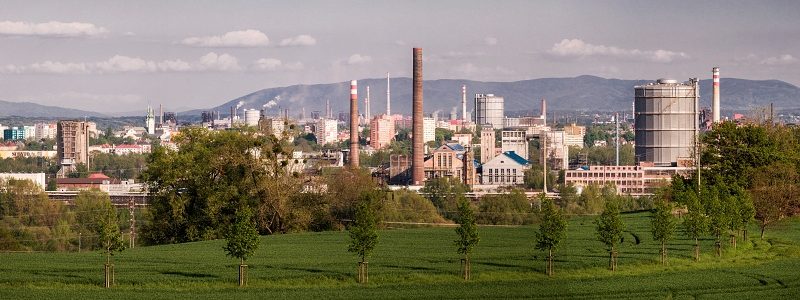Projects
-
The Northern Link Road
-
Extension of Rudná Road
-
Modernization of Nadražni Street
-
Noise absorption of tram transport
-
Quiet Areas
-
Green screens
The Northern Link Road

The City is currently preparing the completion of this important new road linking the city centre with the residential area of Poruba; it will alleviate traffic congestion along the current road corridor between these points. Diverting traffic away from residential areas will not only reduce residents’ exposure to traffic noise; the reduction in traffic volumes will also reduce exposure to pollutants (and CO2).
The first section of the Northern Link Road connects Marianskohorska Rd. with the roundabout at the D1 motorway junction; it also functions as a motorway access road. The total length of the second section will be 4.17 km, with costs estimated at almost 53,8 million EUR. Work is currently underway on an Environmental Impact Assessment (EIA); documentation is being prepared and a public tender for the contractor is also at the preparatory stage.
Construction is scheduled for 2019–2020
Extension of Rudná Road

Another important roadbuilding project is the extension of Rudna Rd.; this Class I road (dual carriageway) will link Ostrava with points to the south-west of the city, alleviating current congestion within the city itself. Currently, all westward traffic has to pass through residential areas; the congestion creates not only noise, but also air pollution and CO2 emissions in these areas.
Modernization of Nadražni Street

A number of noise reduction measures were implemented during the reconstruction of this major transport artery in the city centre. The reconstruction was one of the City’s biggest investment projects during the past two years, with a total costs of 6,6 million EUR (co-funded by EU structural funds).
One of the key elements of the reconstruction work was the installation of noise reduction technologies in the tram track assemblies and mountings; this significantly reduced noise and vibration caused by tram traffic. The reconstruction also included the addition of urban greenery.
Noise absorption of tram transport

Ostrava’s busiest tram routes feature unique new Czech-developed technology which absorbs and damps noise and vibrations produced by trams – especially the noise produced by the rolling contact between the wheels and the rails (metal on metal) and the traction motors.
The BRENS® system combines rail noise absorption and water retention functions, and it is made entirely from recycled materials originating in the automotive industry (recycled rubber from old tyres and recycled synthetic/technical textiles used in car production). These zero-waste products are excellent examples of the circular economy, and they use synthetic industrial waste products in an entirely new and innovative way. Thanks to the properties of the synthetic base material STERED®, the noise-absorbent surface can be covered with turf (real or artificial) or succulents (stonecrops). Most types of surface provide very good noise-absorption properties while also enabling the retention of moisture; this has a beneficial impact on the urban climate, reducing dust and mitigating overheating of street surfaces.
The BRENS® system can be installed on existing tram lines as well as in the construction of new lines. To improve tram safety and traffic flow while also reducing noise and vibrations, low, lightweight, easily removable anti-noise barriers can be fitted on either side of the tram lines; the barriers are made of recycled synthetic material in wire mesh moulds, which can be planted with low-maintenance local plants.
Ostrava is planning to lay grass turf in the central strips of roads where tramlines are located.
A pilot section of 150 metres has been chosen on the eastern approach to the road/tram bridge between the Karolina and Naměstí republiky tram stops; this has one of the steepest gradients in the city’s tram network (and thus creates considerable noise). In this case, low-maintenance plants (stonecrops) have been used instead of standard grass turf. Currently, standard tramline strips are made of concrete panels or asphalt; this reflects noise and increases dust. The cost of the project will be approx. 192 000 EUR.
Quiet Areas

Under applicable legislation, quiet areas in an agglomeration must be delineated by the appropriate Regional Authority (in the case of Ostrava, the Moravian-Silesian Region). Directive 2000/49/EC defines quiet areas as those areas not subjected to noise from any source to an extent that the noise level Lden (day-evening-night) or another appropriate noise indicator exceeds the limits stipulated by a member state.
The purpose of delineating quiet areas is to ensure that such areas are also preserved in the future. The Czech Republic has not yet stipulated noise limits for quiet areas; nevertheless, the Noise Action Plan for the Ostrava Agglomeration contains proposals for possible quiet areas within the city.
The proposals were based on the limit Lden (day-evening-night) <55 dB; this is considered an appropriate compromise based on the requirements stipulated by European legislation. The minimum size of a quiet area is 9 ha. It will be possible to delineate quiet areas once the necessary legislation is approved.
Green screens

The planting of ‘green screens’ (greenery shielding residential areas from busy transport arteries and industrial sites) also helps to reduce air pollution. Green screens have recently been planted at a total cost of approx. 43 million EUR, co-financed by the City and EU structural funds (EUSF). In numbers it is 7 000 trees and 20 000 shrubs.
Fact sheets
The Anti-noise ordinance

In 2010 Ostrava approved an anti-noise ordinance (i.e. a locally applicable law) defining activities that are the main sources of noise and restricting other sources of noise.
The Noise Action Plan

The Noise Action Plan for the Ostrava Agglomeration (NAPOA) was drawn up in order to coordinate reductions in urban noise levels. It focuses primarily on reducing noise at critical locations where noise levels are most in excess of stipulated limits and those affecting the largest numbers of people.
Sources

Factors influencing noise in Ostrava include sources related to transport and to industrial facilities and other sources.
Industrial facilities-related noise

There has been a significant reduction in noise emitted by industrial facilities in Ostrava, due to a range of anti-noise measures and the modernization of production. Due to the city’s industrial history, this used to be a major contributor to urban noise.
Transport-related noise

A number of measures have been implemented in order to reduce noise from road and tram transport (e.g. Project ‘Modernization of Nadrazni Street’, Pilot project – grass planting in tramline strips etc.).
Greenery

The number of trees/shrubs planted in 2013-2015 as part of Ostrava’s ‘Green Screens’ projects. The green screens act as filters and noise reduction measure, helping to shield residential areas from industrial sites or busy roads.



